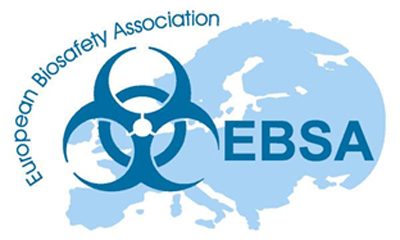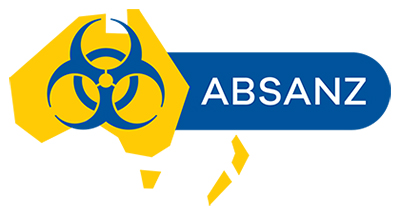Highly effective cleaning solutions are a must for most industries, particularly for the pharmaceutical, biotechnology, and food and beverage processing industries. These industries are required to follow the strictest hygiene standards laid down by national and international regulations.
Cleaning-in-place systems (CIP) provide an efficient and effective solution for thoroughly cleaning manufacturing and processing equipment. Their design can be tailored to suit the design and processing requirements of a particular equipment and industry. Automation in CIP systems is a game-changer, allowing systems to clean and sanitise equipment with razor-sharp precision. Automated cleaning-in-place systems offer multiple advantages over manual cleaning methods.
Based in the UK, Suncombe is a globally renowned leader in CIP process solutions, offering a bespoke range of manual and automated CIP systems for a variety of industries worldwide. In this blog, we’re discussing the indispensable role of automation in CIP systems and processes.
Automated CIP System Advantages
Until the 1950s, the task of cleaning processing equipment and systems was done by hand. It involved disconnecting all pipes, vessels, valves, and other equipment, washing by hand, and reassembling for the next production shift.
The revolution in cleaning production equipment, invented by our founder Dave Overton, introduced a more reliable way of cleaning equipment without dismantling. Automation is the latest wave in CIP systems, where automated CIP systems maximise the benefits of the CIP process. Here’s how:
1. Controlled Cleaning
The clean-in-place steps involve circulating a specific cleaning solution through the equipment and piping using pumps. It’s important to regulate the flow of the solution with valves and control systems as the solution flows through the equipment. Depending on the equipment type and soil type to be cleaned, the CIP cleaning solution typically consists of water and cleaning agents, including detergents, acids, or alkalis.
In manual CIP systems, the cleaning solutions are inserted manually, increasing the risk of injecting more or less cleaning solution than standard. Using inadequate volumes of a cleaning solution can reduce the efficacy of the CIP process, while excess cleaning fluids may affect the equipment’s structure.
Automation in CIP systems ensures the right amounts of cleaning chemicals are released in a controlled and pre-defined manner, with minimal scope of error.
2. Consistent and Uniform Process
Introducing automation to the clean-in-place method can allow for uniformity and consistency in the equipment cleaning processes. The required solution and cleaning method can be duplicated and repeated each time. A consistent cleaning process leads to consistent results, and this ensures high-quality products that consistently meet industry standards.
3. Better Employee Safety
Fully automated CIP systems require less manual intervention. This translates to less hands-on cleaning for workers and reduced exposure to potentially hazardous cleaning chemicals. Suncombe’s automated CIP systems don’t need employees to obtain special confined space permits to enter tanks for cleaning, which also increases employee safety levels.
4. Quicker, Improves Productivity
Automated CIP system processes are 20% faster than their manual counterparts. Let’s say a manual CIP takes around five hours each day. In this case, a 20% decrease in cleaning time can deliver an additional hour of production time.
Additionally, these systems need fewer workers, so you can use your team more efficiently, assigning staff to other important tasks on the production line.
The cleaning systems that use automation are faster at cleaning equipment than manual processes. Workers who might have spent hours cleaning between batches can move from one batch to the next more quickly.
5. Lower Downtimes
Advanced automated CIP systems allow for a significant reduction in troubleshooting when a problem crops up. Problems that once took hours to resolve can be addressed efficiently in a matter of minutes.
With automated cleaning systems, you can reduce the effort and downtime involved in cleaning processes. With no disassembly of equipment required, automated CIP eliminates the need for cleaning, maintenance, and repairs, ensuring the efficiency and cost-effectiveness of production cycles.
6. Recordable
Automation allows you to log and maintain a record of your hygiene and operations throughout all of the clean-in-place steps. Automatic record-keeping can support your traceability and due diligence and, in turn, prevent unforeseen production problems.
7. Reduce Overheads
Businesses in every industrial facility have their own unique requirements. Manual cleaning methods can be time-consuming and expensive, but automation reduces operational overhead costs while cleaning with consistency and accuracy.
All these advantages make automation in CIP systems an integral and indispensable aspect of equipment sanitation processes.
Benefit from Suncombe’s Automated CIP Systems
Suncombe has been a global pioneer in automated CIP systems since 1961. Our best-in-class cleaning systems are available in static CIP and mobile CIP options. Both these systems and their variants are automated and tailored to ensure they meet your cleaning and hygiene specifications.
Bank on our expertise and the ability of our highly motivated team, who proudly carry a wealth of technical knowledge and experience in design, manufacturing, automation, testing, installation, validation, documentation, and after-sales support.
Partner with us and benefit from leveraging automation in CIP systems. Email to [email protected] with your CIP process requirements, or call +44 (0) 203 089 0280 to speak to one of our specialists.



